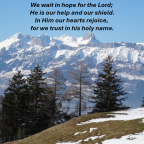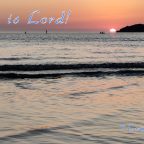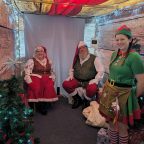In 1882 Hope Chapel, as the new building was called, was something of a landmark in the small village of Knaphill. The Methodists built their first ‘flint chapel’ in 1866; the Church of England a corrugated iron building in 1886. The solid brick construction of the church in the High Street was described at the time as ‘the most modern building in Knaphill’. The opening took place on the Sunday and Monday of August 5 and 6. It is described in the diaries which Robert Lloyd kept over many years. The entry is in red ink, marking it as one of the red-letter days of his life!
Sunday Opened our new Chapel (Hope Chapel) with a prayer meeting at 9.30. Bros. Black, Richardson, Pittman, Collyer etc with us. Bro. Pittman preached. Very good meeting.
Monday Tea Meeting at 5-oclock in the new Chapel which was filled . . . a most excellent and inspiring meeting. All praise to our Lord and God.
It is thought that the land was given by Mr. John Potts, one of the founder members, who was Governor of the womens’ prison on the site of what later became the Inkerman Barracks. It was one of the many plots being sold off by the Necropolis Company who owned large tracts of land in Brookwood and Knaphill.
The cost of the building, which included the present sanctuary, the vestry, and a small lean-to at the back with earth closets, a store and sink, was £370. The church was helped by a loan from Mr. Robert Black, in whose Chelsea home the first converts had been baptised. A successful business man, he encouraged the founding of Churches of Christ congregations in the London area, and had helped the Knaphill venture from the start.
There are notes of an address given by Robert Lloyd to the church soon after the erection of the building, in which he calls upon all the members to take a share in repaying the loan by means of annual pledges. It was hoped to raise £35 p.a. in this way, a sizeable sum as their annual offerings appear to have been about £40 a year. They agreed to do the church cleaning themselves and save £6 which could be added to the building fund. Mr. Lloyd says:
Every member should have a part in this work. There should be no drones in God’s hive.
The loan was in fact paid off by 1897, when a final payment was made of £18, Mr. Black remitting the remaining £10 balance.
The baptistry was soon opened. Mr. Lloyd writes, in early September:
Used the baptistry for the first time in the new Chapel to immerse Mr. Blamfin . . . and again for Mrs. Fisher and Anne Howard.
In 1892, the membership stood at 78. In the January of the same year, the building was registered for marriages, and the first wedding, that of Miss E. T. Lloyd and Mr. F. W. Halsey, took place on the following June 30.






